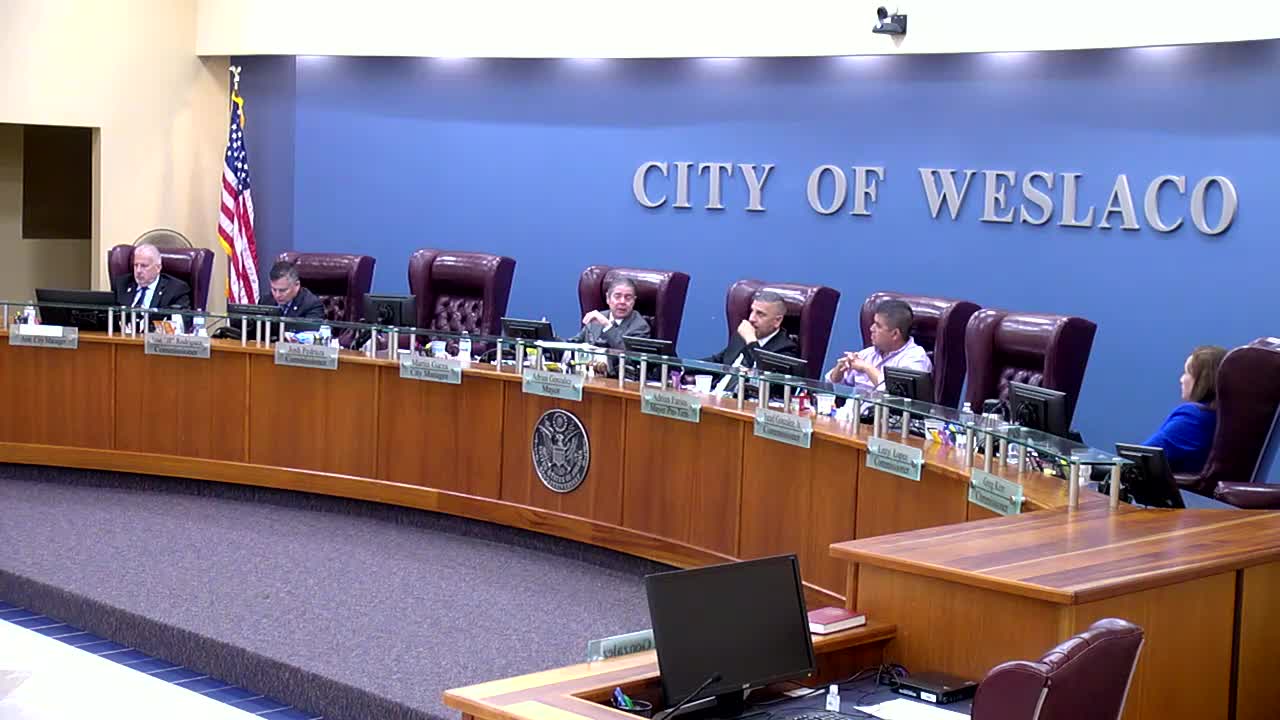Weslaco plans $10 million street improvement project without raising taxes
November 18, 2024 | Haltom City, Tarrant County, Texas
This article was created by AI summarizing key points discussed. AI makes mistakes, so for full details and context, please refer to the video of the full meeting. Please report any errors so we can fix them. Report an error »

In a recent special meeting held on November 18, 2024, the Haltom City Commission focused on critical infrastructure improvements, particularly street maintenance and drainage issues. The discussions highlighted the city's ongoing efforts to manage its street overlay budget and the need for a comprehensive street improvement plan.
City officials reported that the current budget for street overlays stands at $800,000 annually, which they believe is adequate for maintaining regular neighborhood streets. However, they acknowledged that this amount is insufficient for addressing the more significant thoroughfares that require extensive repairs. The city is considering outsourcing some of these larger projects to contractors with the necessary resources to expedite the work.
The commission discussed the potential for increasing the budget in the coming years, with projections suggesting that it could rise to $1.1 million. However, officials emphasized the importance of developing a clear plan and obtaining direction from the commission before proceeding. They noted that the estimated cost for a comprehensive street improvement initiative could reach approximately $10 million, factoring in labor and other expenses.
Additionally, the meeting addressed the city's debt capacity, which currently stands at around $20 million. Officials expressed a desire to utilize this capacity without raising taxes, ensuring that funding for infrastructure projects does not burden residents financially. The commission is exploring various funding options to maintain the current tax rate while addressing pressing infrastructure needs.
Drainage issues were also a significant topic of discussion, with officials highlighting ongoing concerns in areas such as historic downtown Weslaco. The city aims to tackle these challenges alongside street improvements to enhance overall community resilience against flooding.
As the commission moves forward, the emphasis will be on finalizing a strategic plan for street improvements and drainage solutions, ensuring that the community's infrastructure can meet current demands without imposing additional financial strain on residents.
City officials reported that the current budget for street overlays stands at $800,000 annually, which they believe is adequate for maintaining regular neighborhood streets. However, they acknowledged that this amount is insufficient for addressing the more significant thoroughfares that require extensive repairs. The city is considering outsourcing some of these larger projects to contractors with the necessary resources to expedite the work.
The commission discussed the potential for increasing the budget in the coming years, with projections suggesting that it could rise to $1.1 million. However, officials emphasized the importance of developing a clear plan and obtaining direction from the commission before proceeding. They noted that the estimated cost for a comprehensive street improvement initiative could reach approximately $10 million, factoring in labor and other expenses.
Additionally, the meeting addressed the city's debt capacity, which currently stands at around $20 million. Officials expressed a desire to utilize this capacity without raising taxes, ensuring that funding for infrastructure projects does not burden residents financially. The commission is exploring various funding options to maintain the current tax rate while addressing pressing infrastructure needs.
Drainage issues were also a significant topic of discussion, with officials highlighting ongoing concerns in areas such as historic downtown Weslaco. The city aims to tackle these challenges alongside street improvements to enhance overall community resilience against flooding.
As the commission moves forward, the emphasis will be on finalizing a strategic plan for street improvements and drainage solutions, ensuring that the community's infrastructure can meet current demands without imposing additional financial strain on residents.
View full meeting
This article is based on a recent meeting—watch the full video and explore the complete transcript for deeper insights into the discussion.
View full meeting
